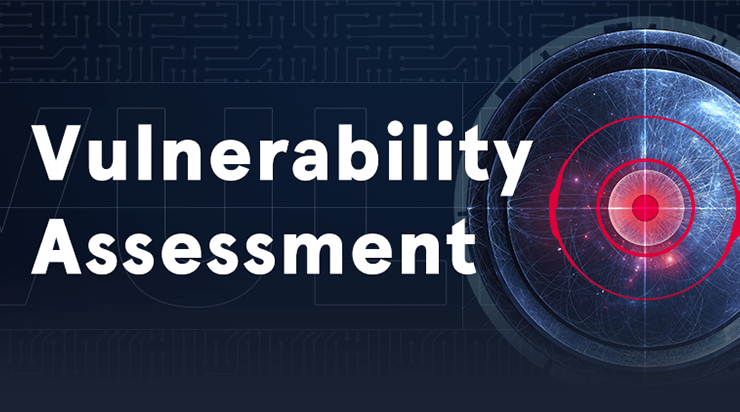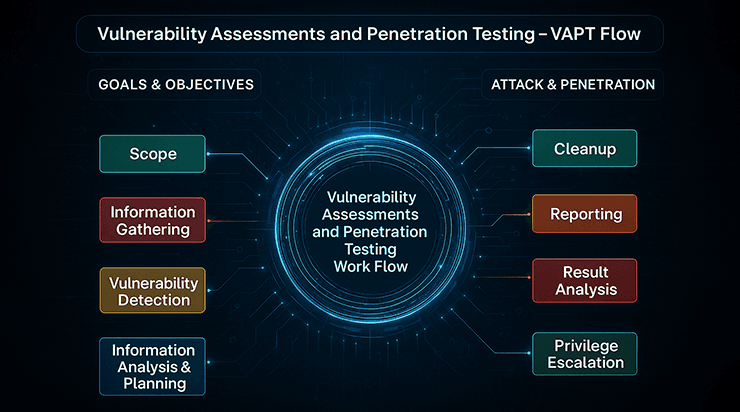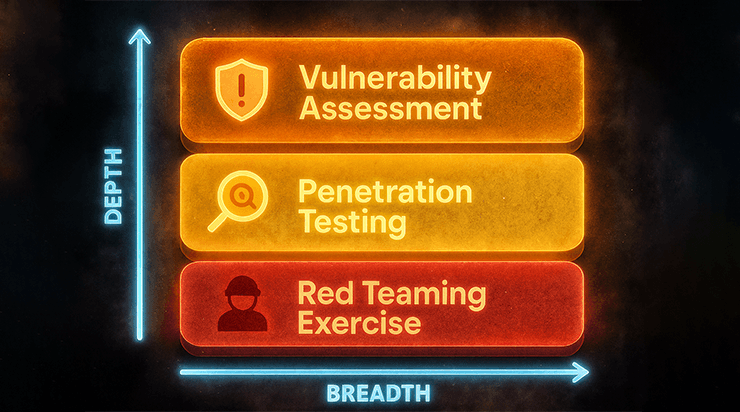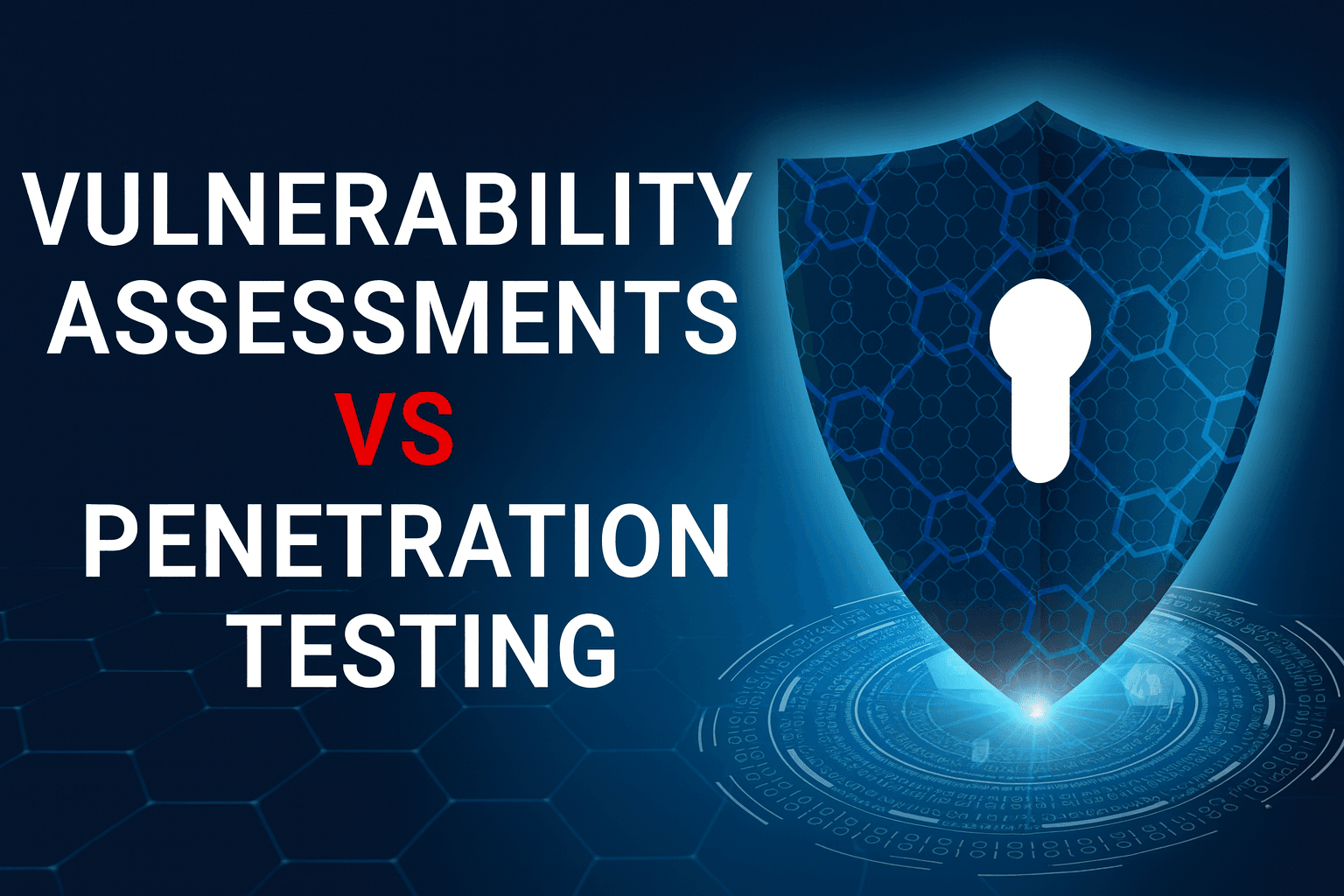Top 5 Differences Between Vulnerability Assessment and Penetration Testing
With cyberattacks making headlines daily, businesses must stay one step ahead to protect their digital assets. Two critical cybersecurity practices, Vulnerability Assessment (VA) and Penetration Testing (PT), play unique roles in securing your systems. While both aim to bolster defenses, they differ significantly in their approach and impact. This guide dives into the top five differences between VA and PT, crafted for business owners, IT teams, and anyone looking to understand how these tools can protect their organization. This article will help you decide which strategy fits your needs.
Why VA and PT Are Essential
Cyber threats, from phishing scams to ransomware, are relentless. In 2024 alone, over 2.6 billion personal records were exposed globally, highlighting the stakes for businesses. VA and PT are like two sides of a security coin, each provides unique benefits to keep hackers at bay. Understanding their differences ensures you’re investing in the proper defences. Let’s explore the top five distinctions, with real-world context to make it clear and actionable.

5 Main Differences Between VA and PT
1- Goal
- Vulnerability Assessment (VA): The goal of a VA is to identify and prioritize potential weaknesses in your IT systems, such as networks, applications, or devices. It’s like a routine health checkup, scanning for issues like outdated software or misconfigured settings to give you a broad overview of your security posture. VA is proactive, aiming to spot problems before they’re exploited.
- Penetration Testing (PT): PT goes beyond identification to simulate real-world cyberattacks. Ethical hackers actively try to exploit vulnerabilities to see how far an attacker could get. It’s like testing your home’s locks by having someone attempt a break-in. PT focuses on validating whether vulnerabilities can be used to breach your defences.
2- Approach
- Vulnerability Assessment: VA relies heavily on automated tools like Nessus, Qualys, or OpenVAS to scan systems for known vulnerabilities. These scans are broad, covering entire networks or applications, and produce reports listing weaknesses ranked by severity (e.g., using the Common Vulnerability Scoring System, or CVSS). Some manual analysis may be involved to reduce false positives, but it’s mostly a passive process.
- Penetration Testing: PT is a hands-on, manual process led by skilled cybersecurity professionals. It involves techniques like SQL injection, phishing simulations, or privilege escalation to mimic real hacker tactics. While automated tools may assist, PT requires human expertise to uncover complex vulnerabilities that scans might miss.
3- Scope
- Vulnerability Assessment: VA casts a wide net, scanning all systems, applications, and networks to identify as many vulnerabilities as possible. It’s about breadth, covering everything from servers to endpoints, but it doesn’t test whether those vulnerabilities can be exploited.
- Penetration Testing: PT is narrower and deeper, focusing on specific systems or vulnerabilities identified as high-risk. It tests the exploitability of weaknesses, showing how an attacker could chain vulnerabilities together to cause significant damage, like accessing sensitive data or taking over a network.
4- Timing
- Vulnerability Assessment: VA is typically performed regularly, think quarterly or after central system changes, to catch new vulnerabilities as they emerge. It’s a continuous process, especially for organizations handling sensitive data or meeting compliance requirements like PCI DSS or HIPAA.
- Penetration Testing: PT is conducted less frequently, often annually or after significant updates, due to its time-intensive and costly nature. It’s strategically timed to validate security after a VA or to test critical systems, like those storing financial or healthcare data.
5- Cost
- Vulnerability Assessment: VA is generally more affordable because it relies on automated tools and requires less human intervention. Costs can range from a few hundred to a few thousand dollars, depending on the size of your infrastructure and the tools used.
- Penetration Testing: PT is more expensive due to the need for skilled ethical hackers and the time-intensive nature of manual testing. Costs can range from $5,000 to over $100,000, depending on the scope and complexity of the test.

A Quick Comparison Table between VA vs. PT:
To summarize, here’s a table highlighting the key differences between VA and PT, making it easy to see which approach suits your needs:
Here’s a concise table summarizing the differences to help you choose the right approach:
| Feature | Vulnerability Assessment | Penetration Testing |
| Goal | Map out all vulnerabilities | Test exploitability of vulnerabilities |
| Approach | Automated tools, minimal manual input | Manual hacking, expert-driven |
| Coverage | Broad, scans entire infrastructure | Narrow, targets critical systems |
| Timing | Frequent (monthly or post-updates) | Periodic (yearly or post-major changes) |
| Investment | Affordable, $500–$5,000 | Costly, $5,000–$100,000 |

Latest Data Breach Figures
Cyber threats are not just theoretical, but they’re costing businesses billions and exposing millions of records. Here’s a look at the latest data breach statistics for 2024 and 2025 to show why VA and PT are critical:
| Statistic | Details |
| Global Cost of Cybercrime (2025) | Projected to reach $10.5 trillion annually |
| Average Cost of a Data Breach (2024) | $4.88 million, a 10% increase from 2023 |
| Healthcare Data Breach (2024) | Change Healthcare breach affected 190 million records |
| Vulnerability Exploitation Surge (2025) | 34% increase in vulnerabilities as initial attack vector |
| Time to Identify a Breach | Average of 204 days to identify, 73 days to contain |
These figures highlight the real-world impact of cyber threats. For instance, the 2024 Change Healthcare breach exposed 190 million records, showing how a single vulnerability can lead to massive data exposure. Regular VAs could have identified weak points, while PT could have tested whether those weaknesses could be exploited, potentially preventing such a disaster.
How VA and PT Work Together
Rather than choosing between VA and PT, the most effective cybersecurity strategy combines both in a process called VAPT (Vulnerability Assessment and Penetration Testing). Here’s how they complement each other:
- Start with VA: Run a vulnerability assessment to get a broad list of potential weaknesses across your systems.
- Follow with PT: Use penetration testing to focus on high-risk vulnerabilities, testing their exploitability and potential impact.
- Remediate and Repeat: Fix identified issues, then repeat VA and PT regularly to stay ahead of new threats.
Conclusion
With 2.6 billion records exposed in 2024 and breach costs soaring to $4.45 million, Vulnerability Assessment and Penetration Testing are vital for any business. VA scans broadly to catch risks, while PT tests deeply to reveal exploitable flaws. Together, they form a powerful defence against hackers. By understanding their differences, goal, execution, coverage, timing, and investment, you can build a customized security strategy that fits your budget and needs.
Don’t let your business become the following headline. Start with a VA to map your risks, follow with a PT to test your defenses, and partner with cybersecurity experts to stay secure. Protect your data, your customers, and your reputation today.








